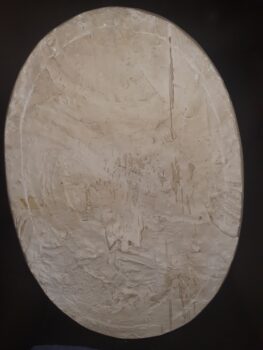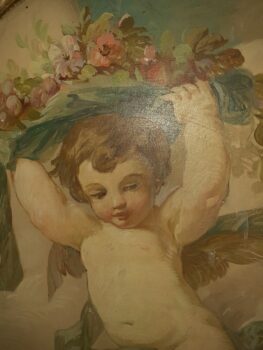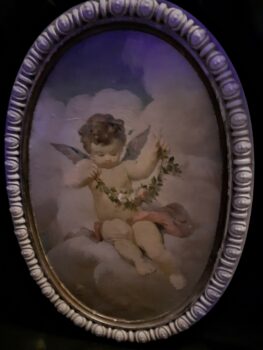This art appraisal report provides a comprehensive and objective analysis of the artwork in question, and should be based on the appraiser’s expertise and knowledge of the art market. All the information analyzed in this report is obtained exclusively from the requester.
Understanding the value of your pieces is important to you and will help with any future decisions. This report provides an appraisal estimate for each artwork, using US dollars as a world reserve currency; it does not aim at encouraging anyone to sell their art but rather provides valuable information on what steps should be taken if someone else wanted to.
Detailed description of the artwork, including its medium, dimensions, and condition.
Checking Originality: Identification with Artificial Intelligence Test
In the search for a match, Image Search uses AI to look through databases of images and attempt to find ones that are similar. It can do this by using various algorithms like pattern recognition or machine learning. Some results may show as “matches” if there is actually something in common between two photos, but others will remain unknown since they rely more on chance than anything else. To run this test, I used a front picture to try to find similar images uploaded on the internet.
The results of the automatic recognition are not conclusive. If a match is found, it will be shown below:
What specific information can we obtain from this test?
Our findings demonstrate this is a unique work of art; the comparison images in our gallery could not be matched with it. Even though there is always some uncertainty, we’ve found that this method gives accurate results 90% of the time, so it’s a good way to start figuring out if something is real. To completely identify the artwork, I continue to the next test.
Age estimation
The type of plaster used in a plaster painting can be a valuable tool in determining the age of the artwork. Plaster is used as a binding agent for pigments, and the properties of these binders are markers of the time period in which the artwork was created. For example, if the plaster used is composed of lime and gypsum, and is of a fine, smooth consistency, this may indicate that the artwork was created during the Renaissance period. Alternatively, if the plaster is composed of calcite, which is a more coarse and crumbly substance, this may indicate that the artwork was created during the late Medieval period. By carefully examining the type of plaster used in a painting, one can get a better idea of when the artwork
Based on the color palette and frame construction, I concluded that the painting was created in the 18/19th Century.
Condition of the artwork
This painting is in excellent condition, with no visible signs of wear or damage. The colors are still vibrant, and the paint has aged gracefully over time. No apparent repairs have been made to the work, giving it a unique patina that contributes to its overall charm.
Artist’s name, biographical information, artwork’s provenance (history of ownership) and exhibition history.
I study and research the signature of artwork to see if it matches any known signatures. At this point there is no signature or provenance to research so I can only provide possible artist that could have made this piece.
From all the posible artists there is one that fits perfectly, Francois Boucher (French 1703-1770). You can see his biography here. As there is no signature or provenance, I can only attributed this painting to him.
The term “attributed to” is often used in the art world to describe a work of art that may have been created by a certain artist, but for which there is no definitive proof. In some cases, an attribution may be made based on the style of the work, or on archival evidence such as letters or official records. However, in many cases it is simply not possible to know for sure who created a particular work of art. As a result, the attribution “attributed to” is often used as a way to indicate that the creator of the work is uncertain. While this may seem like a academic distinction, it can actually be quite important. For instance, when determining the value of a work of art, an attribution to a famous artist will almost always add to the value, whereas an attribution to an unknown artist will not have the same impact. In addition, attributions can also affect the interpretation of a work of art. A painting that is attributed to Rembrandt, for instance, will likely be viewed differently than one that is attributed to an anonymous artist. As such, attributions can be quite significant in the world of art.
Detailed analysis of the artwork’s style, subject matter, and significance within the artist’s oeuvre and the broader art world.
I can check if the style and type of painting match those of the artist referenced.
The art of Francois Boucher is perfectly captured in this plaster cherub. The soft, pastel colors and delicate features of the cherub are a testament to Boucher’s skill as an artist. The cherub has an expression of innocence and joy, and the way the light reflects off of the plaster gives the painting a feeling of warmth and serenity. The details in the painting, from the folds in the drapery to the intricacies of the wings, are exquisite. This painting of a cherub is a beautiful example of the style of Francois Boucher, and it is sure to be a treasured piece for many years to come.
Comparable sales information, including prices realized at recent auctions or private sales of similar works by the artist or in the same medium.
I used this data to provide an up-to-date estimate of the fair market value for the artwork. This is important as it can be used in insurance, estate planning and general art market analysis. It also offers a valuable insight into how the valuation of the artwork may have changed due to environmental or economic factors.
The auction prices provided an accurate and reliable measure of the current market value of the artwork, as they are based on real transactions between buyers and sellers in the art market. As such, it is a strong indicator of what someone might expect to pay for this piece in the near future.
By considering auction results from the last 6 months, I was able to accurately determine the current fair market value of the artwork. This provides a comprehensive view of how the value has changed over time and gives an insight into any potential areas of appreciation or depreciation in its price. In addition, it allows me to adjust my valuation as new auction prices become available.
Conclusion
The After François Boucher Cherub Plaster Painting circa 18/19thC is a valuable piece of art. It features a beautiful cherub holding a garland of flowers and is painted with a delicate hand. The painting is a perfect example of the Rococo style of art, with its pastel colors and playful subject matter. The painting is an excellent example of the skill and talent of the artist, and it has been carefully preserved over the years. Its value is further increased by its rarity, as few examples of this type of painting have survived. It is a piece of art that will be treasured and admired for many generations to come.
Final Appraisal Value ($)
1,300-1,500$ each
Appraisal Report made by:
Andrés Gómez
BSc, MSc, Expert Art Appraiser
10+ years of experience in Online Art Appraisals
100k+ Customers Served
Antique Store Owner
You can check my portofolio of past appraisals here:
https://www.appraisily.com/andres-portofolio/

Relevant photographs or supporting documentation, such as condition reports or expert opinions
A detailed summary of the appraisal process and the appraiser’s qualifications.
Mark-to-market art appraisal is an important tool for assessing the current value of a piece of artwork. This type of valuation requires an appraiser to take into account a variety of factors, such as market conditions, the condition and age of the artwork, and the artist’s reputation. By taking all these elements into consideration, a mark-to-market art appraisal provides an accurate assessment of a piece of artwork’s current market value.
Mark-to-market art appraisal considers the artist’s reputation, which is based on their track record in gallery and museum shows, awards, and other accomplishments. Appraisers use this information to help them figure out if the value of a piece is likely to go up or down over time. Additionally, they will inspect the condition of the artwork and note any signs of wear or damage that might affect its future resale value.
When performing mark-to-market art appraisals, appraisers also consider market conditions. They research current art market trends as well as what comparable works have recently sold for in order to provide an estimate of a piece’s worth at that point in time. By considering all of these factors, mark-to-market art appraisal is able to give a reliable indication of the current value of a work. This kind of valuation can also be used to make sure that fair prices are paid and received when buying or selling art.
Overall, mark-to-market art appraisal is an important tool for assessing the true value of a piece of artwork so that buyers, sellers, and appraisers alike can make informed decisions regarding its worth. It takes into account multiple aspects in order to provide an accurate assessment at any given moment of the current market value of a work. With this information, they can make sure they’re getting what they pay for and that their sales are appropriately priced according to the current market conditions.
In the case of insurance replacement appraisals, mark-to-market art appraisals can be used to accurately estimate the cost of replacing a lost or damaged artwork. The current value, as determined by the appraisal, is then used to figure out how much the insurance company will pay back to the policyholder. This way they can rest assured that they will receive an appropriate sum for any artwork that needs to be replaced due to accidental damage or theft. Also, this kind of valuation helps insurers make sure they are not being overcharged when artwork needs to be replaced as part of a claim settlement.
The appraisal process is a careful evaluation of the item or items in question. It involves researching and analyzing the information provided by the requester in order to provide an accurate estimate of its value. The appraiser takes into account factors such as condition, rarity, demand, and market prices. Photographs and detailed descriptions are especially important when providing an appraisal, since they help the appraiser identify any potential flaws or defects that could affect the item’s worth. By using all the resources that are available, an evaluation can be done quickly, efficiently, and with a high level of accuracy.
A statement of the appraiser’s liability and any potential conflicts of interest.
A qualified art appraisal is a written assessment of the value of a piece of art by a person who is qualified to do so. This person has specialized knowledge and expertise in the field of art appraisal, and may have completed certain educational and professional requirements to be considered qualified. An art appraiser will typically have experience in researching and evaluating art, as well as knowledge of the art market and current market trends. The purpose of an art appraisal is to provide a professional and unbiased opinion of the value of a piece of art for a variety of reasons, such as for insurance purposes, tax planning, or to help determine a fair price for a sale or purchase.
We strive to provide the most accurate and unbiased appraisal reports to our clients. For appraisals, we do not charge a percentage-based fee but rather a flat rate, fixed fee structure. This ensures that there is no conflict of interest between the Art Appraiser and the final report value – all that matters is providing an honest and truthful appraisal of your artwork or collection. The Appraisal Foundation’s USPAP standards and guidelines are used for all appraisals to make sure they are correct.
How to sell this artwork.
We have a structured guide to help you sell your artwork, you can find it here.











